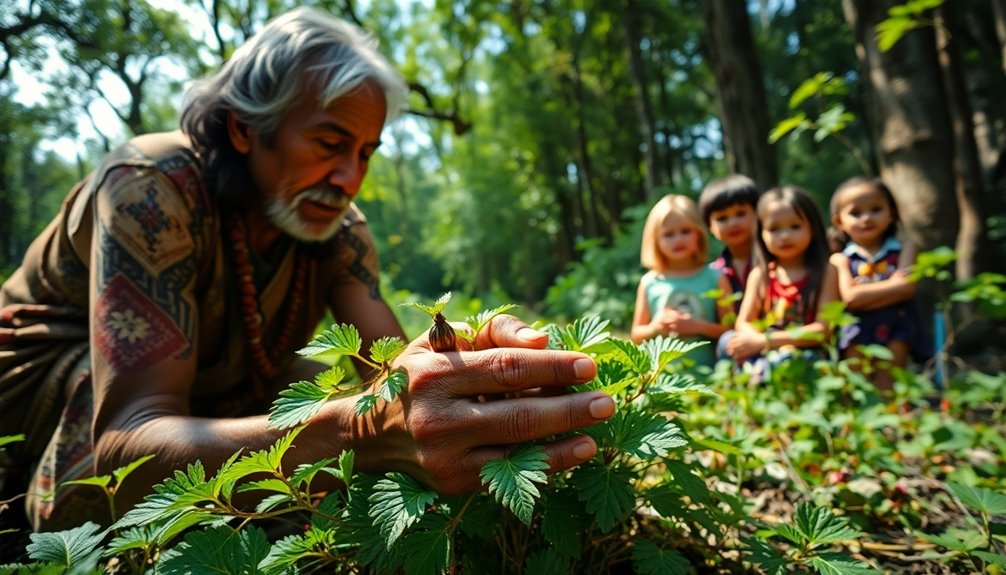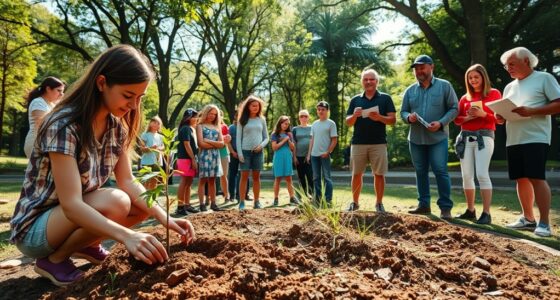Indigenous knowledge plays a vital role in conservation by offering insights gathered over generations about local ecosystems and sustainable practices. This knowledge, intertwined with cultural beliefs, enhances biodiversity management and fosters ecological balance. Indigenous communities employ traditional techniques, like controlled burns and crop rotation, to maintain healthy lands. By integrating these perspectives with modern science, you can find effective solutions to conservation challenges. There's even more to discover about the impact of this knowledge on conservation.
Key Takeaways
- Indigenous knowledge systems provide sustainable practices based on generations of ecological observations and a deep connection to the land.
- Traditional Ecological Knowledge (TEK) complements modern science, enhancing understanding of ecosystems and guiding effective conservation strategies.
- Successful Indigenous-led initiatives demonstrate the effectiveness of integrating traditional practices with contemporary conservation efforts to enhance biodiversity.
- Recognizing and respecting Indigenous methodologies in conservation fosters innovative solutions and strengthens community engagement in environmental management.
- Inclusion of Indigenous perspectives in policy-making leads to more holistic approaches to ecological challenges and empowers local communities in stewardship.
Understanding Indigenous Knowledge Systems

While many people often overlook the depth of Indigenous knowledge systems, these frameworks offer invaluable insights into sustainable practices and ecological balance.
You'll find that Indigenous communities have accumulated knowledge through generations, rooted in their close relationship with the land. This understanding encompasses everything from seasonal changes to local biodiversity, guiding their resource management and conservation efforts.
By engaging with these systems, you can appreciate the significance of traditional practices like controlled burns or crop rotation, which enhance soil health and biodiversity.
Recognizing the wisdom embedded in these practices allows you to see the holistic view of nature that Indigenous peoples maintain.
Ultimately, embracing Indigenous knowledge systems can transform your perspective on conservation and promote a deeper connection to the environment.
The Intersection of Traditional Ecological Knowledge and Modern Science

As you explore the intersection of Traditional Ecological Knowledge (TEK) and modern science, you'll discover how these two approaches can complement and enhance one another.
TEK brings centuries of observations and insights about local ecosystems, while modern science offers rigorous methodologies and technologies for data collection. By integrating TEK, scientists can gain a deeper understanding of ecological patterns and species behavior, often overlooked in conventional studies.
TEK and modern science together deepen our understanding of ecosystems, revealing insights often missed in traditional studies.
Conversely, TEK practitioners can benefit from scientific tools to validate their knowledge and address contemporary environmental challenges. This collaboration fosters a more holistic approach to conservation, where both perspectives are valued.
Ultimately, merging these knowledge systems can lead to more effective and sustainable environmental management practices, benefiting both communities and the ecosystems they cherish.
Case Studies of Successful Indigenous-Led Conservation Initiatives

Indigenous-led conservation initiatives have emerged as powerful examples of effective environmental stewardship, demonstrating that local knowledge and practices can drive successful conservation efforts.
One notable case is the Haida Nation's management of the Gwaii Haanas National Park Reserve in Canada. By integrating traditional ecological knowledge with modern conservation strategies, they've successfully protected diverse marine and terrestrial ecosystems.
Similarly, the Maori of New Zealand have implemented the "Kaitiakitanga" approach, which emphasizes guardianship and sustainable use of natural resources. Their efforts in restoring native forests and protecting endangered species showcase the effectiveness of indigenous practices.
Through these examples, you can see how community-led initiatives foster resilience and biodiversity, proving that local wisdom is invaluable in the fight against environmental degradation.
The Importance of Biodiversity in Indigenous Practices
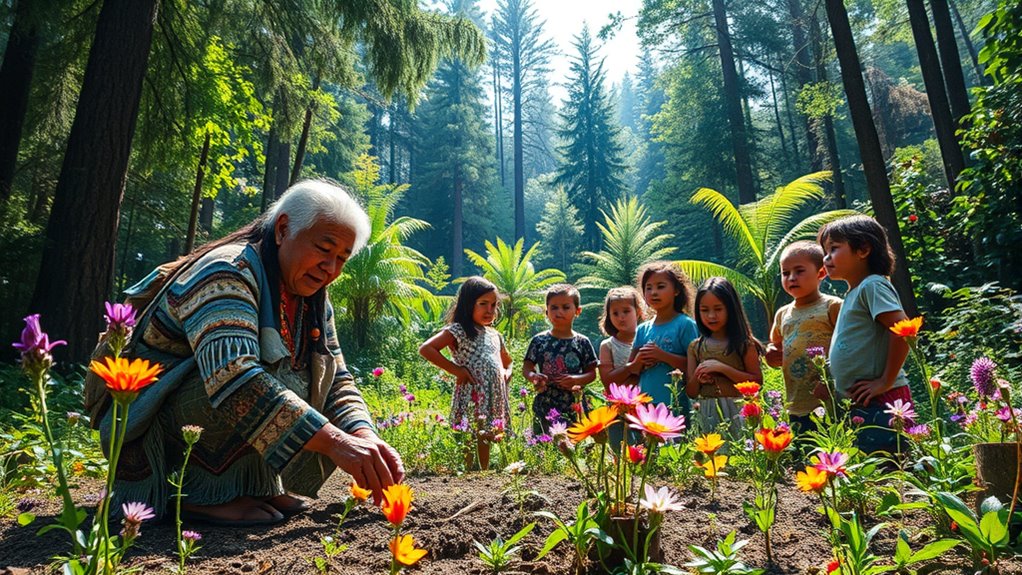
Building on the success of community-led initiatives, biodiversity plays a central role in indigenous practices.
You'll find that indigenous communities nurture their environments, relying on diverse species for food, medicine, and cultural expression. By preserving various plants and animals, they maintain ecosystems that support their livelihoods and spiritual beliefs.
You also witness how traditional knowledge helps in sustaining biodiversity; practices like rotational farming and seasonal hunting reflect a deep understanding of ecological balance. This connection fosters resilience against environmental changes.
When these communities protect biodiversity, you see a direct impact on their overall well-being and cultural identity. Embracing these practices not only benefits indigenous peoples but also contributes to global conservation efforts.
It's a symbiotic relationship worth acknowledging.
Challenges Faced by Indigenous Communities in Conservation Efforts
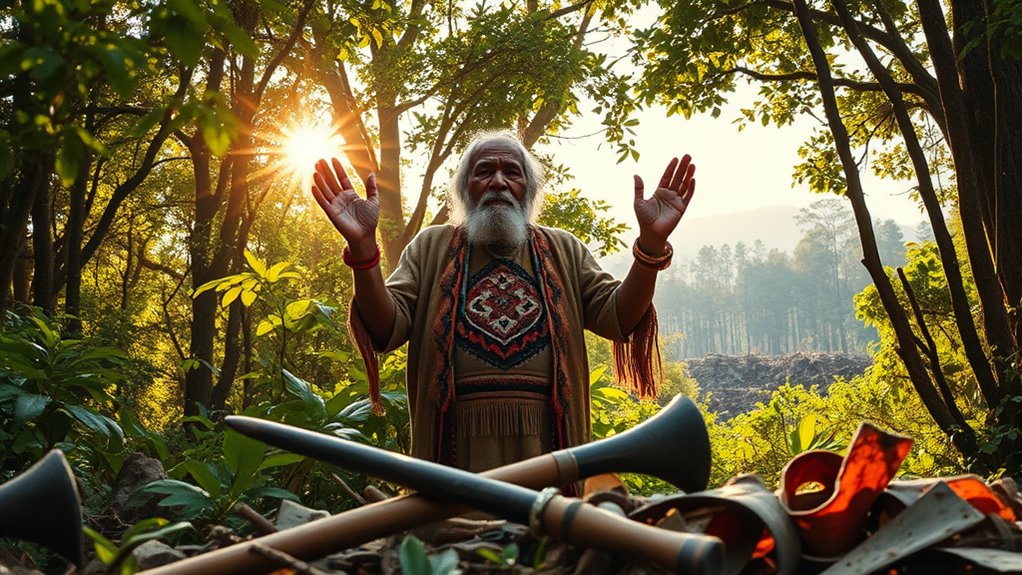
While indigenous communities play a crucial role in conservation, they often face significant challenges that hinder their efforts. Limited access to resources, such as funding and technology, makes it tough for you to implement effective conservation strategies.
Additionally, external pressures from industrial development and land encroachments threaten your traditional territories, disrupting ecosystems you've managed for generations.
There's also a lack of recognition and support from government bodies, which can marginalize your voice in decision-making processes.
Cultural misunderstandings can lead to conflicts with non-indigenous stakeholders, complicating collaboration.
Lastly, climate change disproportionately affects your communities, exacerbating existing vulnerabilities and creating new obstacles.
Overcoming these challenges is essential for empowering your conservation initiatives and preserving biodiversity.
Collaborative Approaches: Bridging Indigenous Knowledge and Western Science

Collaborative approaches that unite Indigenous knowledge with Western science can create powerful synergies for conservation. By engaging with Indigenous communities, you tap into centuries of ecological understanding that enriches scientific research.
Combining traditional practices with modern techniques enhances biodiversity management and fosters resilience in ecosystems.
When you listen to Indigenous perspectives, you gain insights into local species, seasonal changes, and sustainable practices tailored to specific landscapes. This collaboration promotes mutual respect and ensures that both knowledge systems contribute to effective conservation strategies.
You'll find that incorporating Indigenous wisdom not only aids in environmental protection but also strengthens community ties and fosters shared stewardship.
Ultimately, a collaborative approach empowers all parties, leading to more comprehensive and successful conservation outcomes.
Policy Implications for Integrating Indigenous Perspectives in Conservation

Integrating Indigenous perspectives into conservation policy can significantly enhance the effectiveness of environmental management. By recognizing and valuing Indigenous knowledge, you can create more holistic approaches that address ecological challenges.
Integrating Indigenous perspectives into conservation enriches environmental management and fosters holistic solutions to ecological challenges.
This means including Indigenous voices in decision-making processes, ensuring their traditional practices and insights are respected. Policies should promote co-management strategies, allowing Indigenous communities to play active roles in conservation efforts.
Furthermore, funding initiatives should prioritize projects that incorporate Indigenous wisdom, fostering sustainable practices deeply rooted in local cultures. By doing so, you not only empower Indigenous communities but also improve biodiversity outcomes.
Ultimately, integrating these perspectives leads to a more inclusive and effective conservation framework that benefits both people and the planet.
The Future of Conservation: Learning From Indigenous Wisdom
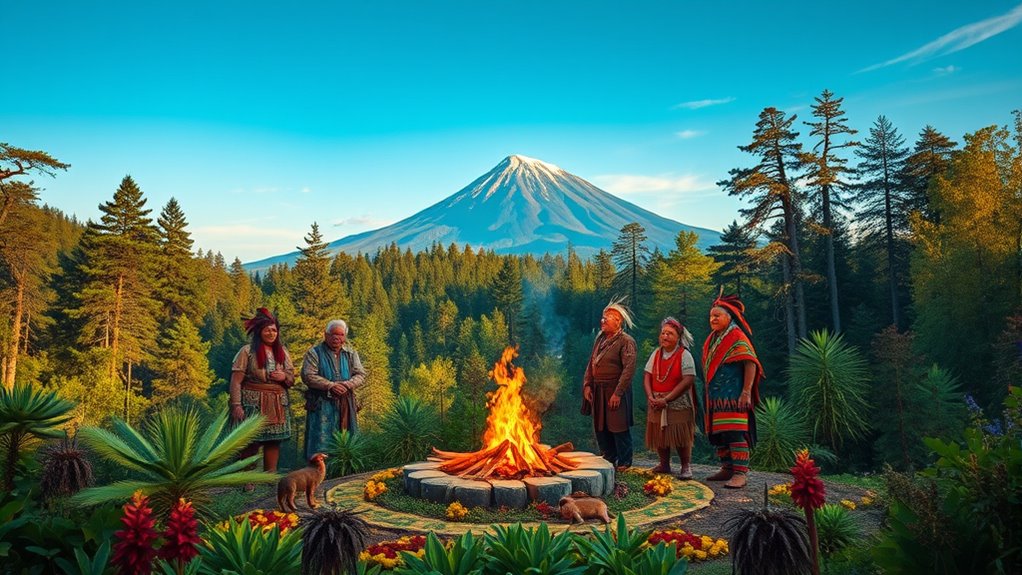
As we face the escalating challenges of climate change and biodiversity loss, it's crucial to look to Indigenous wisdom for guidance in shaping the future of conservation.
Indigenous communities possess a deep understanding of local ecosystems, honed over generations. By embracing their traditional practices and perspectives, you can foster more effective conservation strategies. This means incorporating holistic approaches that prioritize sustainability and respect for nature.
Collaboration with Indigenous peoples can enhance biodiversity management, as they often have a spiritual connection to the land that drives their stewardship. By learning from their experiences, you can create a more inclusive and resilient conservation framework that benefits both the environment and local communities.
The future of conservation lies in the wisdom of those who've lived in harmony with nature.
Frequently Asked Questions
How Can Indigenous Knowledge Be Documented and Preserved for Future Generations?
To document and preserve indigenous knowledge, you can start by recording oral histories through interviews with community elders.
Encourage community workshops where traditional practices and stories are shared.
Utilize technology like audio and video recordings to capture these sessions.
Collaborate with local schools to integrate this knowledge into curricula.
Finally, create accessible archives online, ensuring that the knowledge is preserved, respected, and shared with future generations in a meaningful way.
What Role Do Indigenous Women Play in Conservation Efforts?
Have you ever considered how indigenous women shape conservation efforts? They often play vital roles as knowledge keepers, community leaders, and advocates for sustainable practices.
Their deep understanding of local ecosystems and traditions helps safeguard biodiversity. By collaborating with men and engaging with modern conservation strategies, they create impactful solutions.
Supporting indigenous women not only empowers communities but also enhances conservation outcomes, ensuring that vital knowledge and practices are passed down through generations.
How Can Non-Indigenous People Support Indigenous-Led Conservation Initiatives?
You can support indigenous-led conservation initiatives by amplifying their voices and respecting their knowledge.
Collaborate with indigenous communities, listen to their needs, and help raise awareness about their efforts. Fund projects directly or through organizations that prioritize indigenous leadership.
Educate yourself and others about the importance of biodiversity and indigenous practices. Advocate for policies that protect their rights and land, ensuring they've the resources needed to continue their vital work.
What Impact Does Climate Change Have on Indigenous Knowledge Systems?
So, you think climate change just messes with the weather, huh? Well, it's also turning traditional knowledge upside down.
Indigenous knowledge systems, finely tuned over generations, struggle as ecosystems shift unpredictably. You'll find that these communities face challenges in passing down wisdom, as plants and animal behaviors change.
It's a bit like trying to navigate a map where the landmarks keep moving—confusing and frustrating, right? Climate change isn't just a trend; it's a reality check.
Are There Specific Training Programs for Learning Indigenous Conservation Practices?
Yes, there are specific training programs that focus on learning indigenous conservation practices.
You can find workshops, online courses, and community-based programs that teach these valuable techniques. Many organizations partner with indigenous communities to ensure that traditional knowledge is passed down effectively.
Look for local universities or environmental groups that offer such training. Engaging with these programs not only enriches your understanding but also supports the preservation of indigenous cultures and practices.
Conclusion
Incorporating indigenous knowledge into conservation efforts isn't just a good idea—it's essential. Did you know that over 80% of the world's biodiversity is found in areas managed by indigenous peoples? By recognizing and valuing their traditional ecological knowledge, we can create more effective and sustainable conservation strategies. Bridging these wisdoms with modern science offers a promising path forward, ensuring that both the environment and indigenous cultures thrive together. Let's embrace this collaborative approach for a healthier planet.
